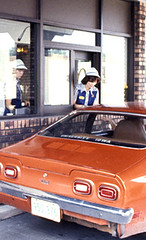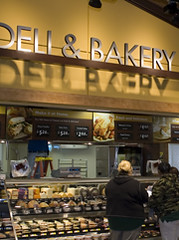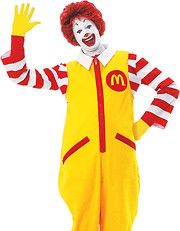 In recent years, McDonald's has been making a real effort to change itself from being the flagship of unhealthy fast food to the pinnacle of quick service with healthy choices. The change has been mostly prompted by continuous assaults: Some are are fair. Some are not fair. And some are ridiculous.
In recent years, McDonald's has been making a real effort to change itself from being the flagship of unhealthy fast food to the pinnacle of quick service with healthy choices. The change has been mostly prompted by continuous assaults: Some are are fair. Some are not fair. And some are ridiculous.The net sum of these varied stories is that the corporate giant is trying to make an admirable change, even if the totality of it continues to be trial and error. Sometimes, they get it right, like adding fruit to choices to the Happy Meal. And sometimes, they get it wrong, like the #McStories campaign.
Why McStories is a beautiful campaign with insidious results.
When I first saw the series of YouTube videos, I almost wrote a post about them. They are beautiful slices of Americana, featuring farmers who take great care in the produce they provide. I love the commercials. But I also hate the commercials.
I don't hate them because of their message or the personalized stories from the farmers. We could use more stories like these, given our country's bout with self-loathing. In fact, that was the reason I decided to pass on critiquing the campaign. The farmers certainly didn't deserve it.
Unfortunately, it was just a matter of time before someone else did. Yesterday, someone did in a tremendously coordinated and catchy fashion. It was only a matter of time before the whole thing went semi-viral. McDonald's has lost Twitter for awhile. It might even lose the entire campaign.
The social media crisis could have been simple enough to spot. The hashtag #McStories, which was meant to support the campaign, was more or less jacked. It was first jacked by PETA and then everyone started piling on with one rancid story about McDonald's after another. #McStories isn't about farmers anymore, at least not for the short term and maybe never.
The attack is no longer confined to Twitter either. It will migrate to other assets. The media coverage of the crisis only attracts more of the same, usually three-fold: people with agendas (like PETA), people with real gripes (like some of the tweet authors), and people who see an easy way to get attention (the attention-starved majority).
McStories is mostly true, but it comes across as a classic overreach.
If there is one thing advertisers and marketers might take away from the McStories backlash, it's that forcing the marketing message, especially when it is supported by social media, will eventually backfire.
And that's why I hated the campaign. Anybody on the strategy side (because it's too much to ask the creatives to see it) could have seen the backlash coming miles away. Despite many successes, McDonald's house is too dirty to rest its laurels on a handful of true but spectacularly crisp stories.
On McDonald's side, Snopes investigated such beef claims years ago and found them to be mostly true. McDonald's also made progress to be more environmentally friendly, but it tends to miss some goals every year. And then there is always the question about nutrition, especially in terms of carbs, fat, and sodium. All in all, it's one giant hit and miss machine. That's not good enough for a McStories message.
Besides, the problem isn't so much where McDonald's gets its stuff. It's what McDonald's does to this stuff once it leaves the hands of conscientious farmers. It's the processing, recipes, additives, production, freezing, unfreezing, distribution, and in-store preparation that makes you wonder.
Those beautiful cows, lettuce heads, and potatoes are all destined to become something that ages at an impossibly slow pace. And until McDonald's begins to address that fact its operational systems have reached their carrying capacity to deliver the quality I once associated with them, it will continue to face stiff criticism as the the biggest quick service chain.
Personally, I think it's all too bad. McDonald's has plenty to take pride in, ranging from being a massive employer for first-time employees and iconic marketing successes to being a sound investment and a corporation that has blemishes but is trying to do something to clean them up instead of sweeping them aside. However, to make the case that the hamburger joint represents the backbone of family-owned American agriculture in order to deliver near farm-fresh ingredients to consumers ... sigh.




























